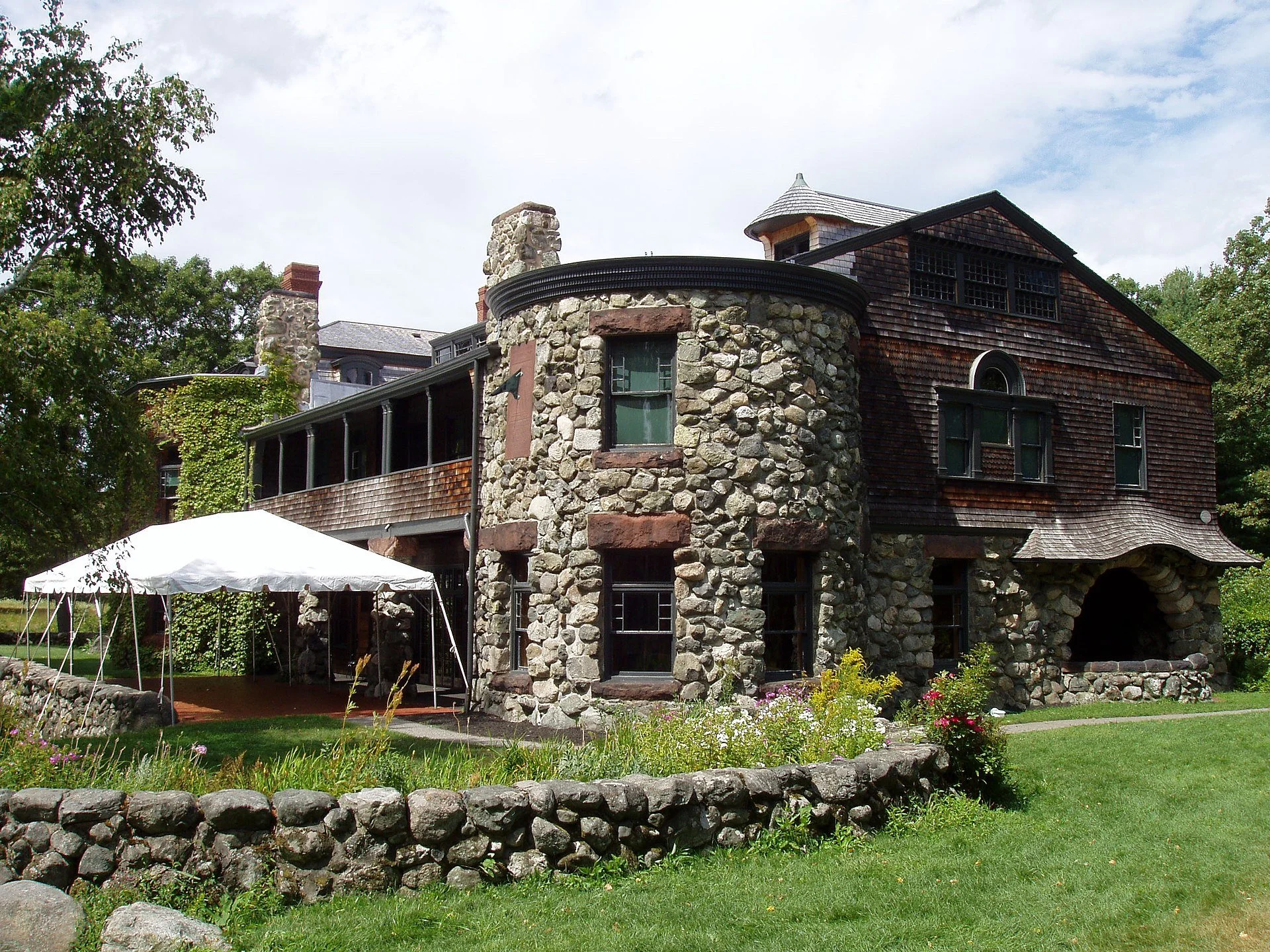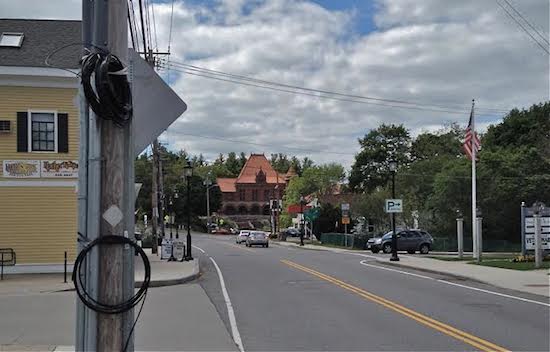
Melding buildings and landscape
Henry Hobson Richardson’s famous Trinity Church (built 1872-1877) on Boston’s Copley Square.
Adapted from Robert Whitcomb’s “Digital Diary,’’ in GoLocal24.com
Many people have seen the great Gilded Age architect Henry Hobson Richardson’s (1838-1886) famous public and private buildings around America, with Boston’s grand Trinity Church still the most famous. Richardson invented a unique Romanesque Revival style with ingenious massing and use of stone, and he was also a pioneer in developing the remarkably modernist “Shingle Style” houses so popular in New England.
And yet while Richardson was very well known in his fairly short lifetime, few people now know his name, even though many historians consider him a founder of modern American architecture.
But Hugh Howard has come along to help rectify that with his duel biography Architects of an American Landscape: Henry Hobson Richardson, Frederick Law Olmsted, and the Reimagining of America’s Public and Private Spaces.
Olmsted (1822-1903), unlike Richardson, remains famous, as the co-designer of Central Park and designer of many other famous parks, such as those in Boston’s “Emerald Necklace,’’ across America. Many see him as the father of American landscape architecture.
Richardson and Olmsted, despite very different backgrounds and personalities, worked very closely on dozens of commissions for cooperative designs for parks, railroad stations, public libraries and houses. Their projects integrated the built and natural environments. Many of these collaborations resulted in Richardson’s buildings looking comfortably settled into Olmsted’s landscaping.
Olmsted said of Richardson:
“He was the greatest comfort and the most potent stimulus that has ever come into my artistic life.”
This is a terrific book, elegantly written. It would have even better with bigger and clearer pictures.
In Waltham, Mass.: “Stonehurst,’’ now a museum and built for Boston Brahmin lawyer Robert Treat Paine. Richardson designed the house and Olmsted the grounds, in close collaboration, in a project that took from 1883-1886.
Medieval beauty in 'Suck City'
Boston's famed Trinity Church, on Copley Square.
“Trinity Park lies directly across from the {Boston Public} library, Trinity Church rising like a medieval thought amidst the glass and steel towers'' {around Copley Square in Boston's Back Bay}.''
-- From Another Bullshit Night in Suck City, by Nick Flynn
Trinity Church and its parish house were designed by Henry Hobson Richardson, and built from 1872 to 1877, when the complex was consecrated. Trinity Church established Richardson's reputation. It is the archetype of the Richardsonian Romanesque style, with its clay roof, polychromy, rough stone, heavy arches and a massive tower. This style was soon adopted for many public buildings, and some churches, across the United States.
The church is considered one of the greatest buildings in America.
The church was structurally damaged in the ‘70s by construction of the 60-story skyscraper at 200 Clarendon St., first called the John Hancock Tower, and still colloquially known as The Hancock. Among other problems with the tower were that a few panes of glass fell from it until engineering flaws were fixed. The flaws added the thrill of possible decapitation of visitors to Copley Square – one of the grandest public spaces in the Western Hemisphere.
The structural damage to the church was fully fixed, with the cost borne by the developers.
Finding visual and food relief in a sad corner of Mass.
Photos and commentary by WILLIAM MORGAN
Top picture: Main Street, North Easton. Mass. -- Ames Memorial Hall (1879-81) straight ahead; Bill's House of Pizza to the left.
Bottom: Oliver Ames Free Library, North Easton, 1877-79. The landscaping was by Frederick Law Olmsted, and interior decoration by Stanford White and Augustus Saint-Gaudens. Not your typical small town public library.
With the exception of the Mass Pike and I-95 along the Connecticut shore, it is not easy to go east and west in New England. You don’t have to have taken geology to understand that it is simpler to go from Hartford to Brattleboro than to go from Hartford to Providence.
Glaciation may be the reason for the north-south arterial New England development patterns, but one result was the creation of certain pockets of terra incognita, places hard to traverse and thus somewhat ignored.
One such Dismal Swamp is an odd and unwelcoming chunk of eastern Massachusetts defined by Routes 24 and 128, and I-95. This stomping ground of King Philip and the Pilgrims must have once been attractive in a rural sort of way. But now, it is neither fish nor fowl, neither Concord nor Cohasset, Marblehead nor Marshfield.
This "Metro Brockton" has suffered the further indignity in having been mercilessly over-developed – how many more strip malls, box stores, and crummy spec houses can you jam into the obliterated farmland of Bristol and Plymouth counties?
The other day my wife and I endured the rat-maze at IKEA in Stoughton. Having traveled there by seemingly illogical north-south only highways, we decided to head home by striking out west across the landscape.
We were also hungry. Dunkin Donuts, Panera, McDonald's, Burger King, and their ilk are places to be patronized only in extreme distress, say, passing through Chamberlain, S.D., late at night. But where in the Mansfield-Brockton-Stoughton Bermuda Triangle could one find reasonable sustenance?
We thought the solution might be North Easton, a town famous for a collection of the buildings of the great American architect Henry Hobson Richardson. His patrons, the Ames family, at one time the world's largest shovel manufacturer, had richly endowed the town, so perhaps there was a good restaurant or two.
The Farmer's Daughter, an attractive healthy bistro, had just closed for the day. So, we were limited to a small, unprepossessing establishment, called Bill's House of Pizza.
Bill's was empty, not a good sign, but lunch time was over. Bill himself, despite the boy-next-door name, is a fascinating guy. An Egyptian of Greek ancestry, raised in Alexandria, and trained as a civil engineer, Bill came to Massachusetts to be near fellow Copts. He also turns out to be a great cook, as our simple mushroom and basil pizza proved. Lunch cost less than $14.




